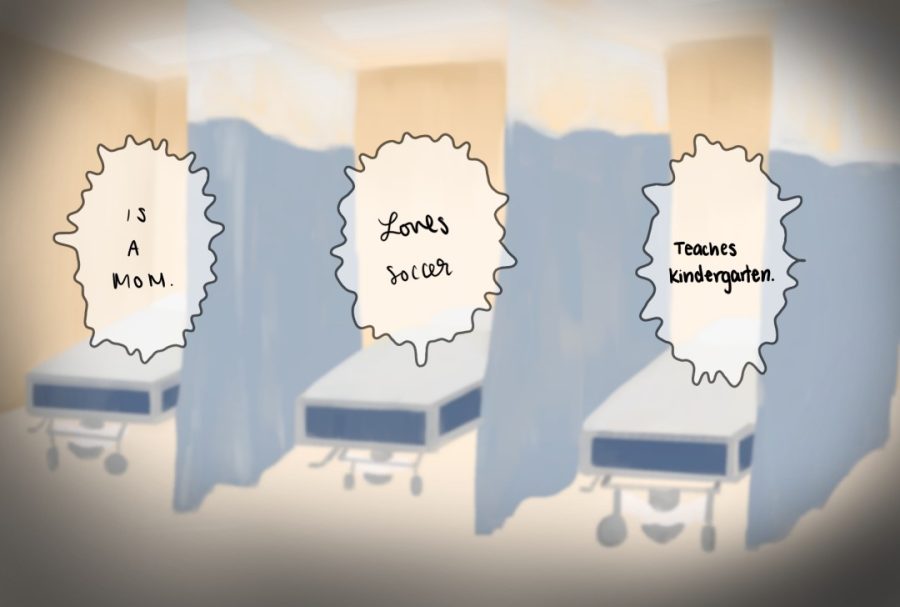Treat the patient, not the disease
April 4, 2023
“I don’t remember the last time someone gave me a compliment. A volunteer has never even been willing to talk to me,” she stated, looking up at me, glistening tears spreading across her cheeks.
As a weekly volunteer at a hospital, I often notice a pattern in which patients tend to be viewed as “less than” by visitors because of their circumstances. When I delivered flowers to a patient’s room a month ago, I initiated a conversation with her and complimented her gorgeous blue eyes. That day, I learned how a few seconds of kindness could impact someone. Seeing patients as people may have a larger correlation with the patient’s health status than we believe.
According to Northwestern University, the leading cause of patient dehumanization is deindividuation. Patients are seen as a part of a larger, blended group rather than individuals with different needs. By doing so, patients don’t receive the care they need to trust their physicians, making it more challenging to improve their health. If each patient is recognized, hospitals can offer the best treatment to all patients, without sacrificing the patient’s necessities to develop stronger doctor-patient relationships.
The famous phrase of “treat the patient, not the disease” describes why personal patient care must involve connecting with the patient and getting to know their needs and desires. There are always ongoing medical discoveries and scientific research to improve health care, but what about improving our connections with patients for better patient care?
Adam Waytz, an assistant professor of management and organizations at the Kellogg School of Management, and Omar Sultan Haque, a psychologist and physician at Harvard University, inform how physicians can decrease the dehumanization of patients. For example, casually talking to a patient about information already on their charts could emphasize a patient’s humanity. Additionally, doctors can ask more questions about a patient’s feelings rather than jumping into external treatment plans.
Seeing patients as people works both ways – patients can connect with their physicians and nurses as well to promote a safe, healthy, and uplifting environment that will benefit their overall well-being.
For the rest of us, educating ourselves and our communities on how we show empathy towards hospital patients is a valuable skill to decrease patient dehumanization and promote one-on-one personal connections. As a hospital visitor, volunteer, or physician, we may not think our words impact patient care as much as medical procedures do. However, treating patients as people first is necessary to improve their health. Every time I encounter a patient in a hospital, I take the opportunity to compliment them, ask about their hobbies, and get to know who they are. The next time you see a hospital patient, consider getting to know them for who they are because your small act of kindness is a stepping stone into a future of improved patient care.




